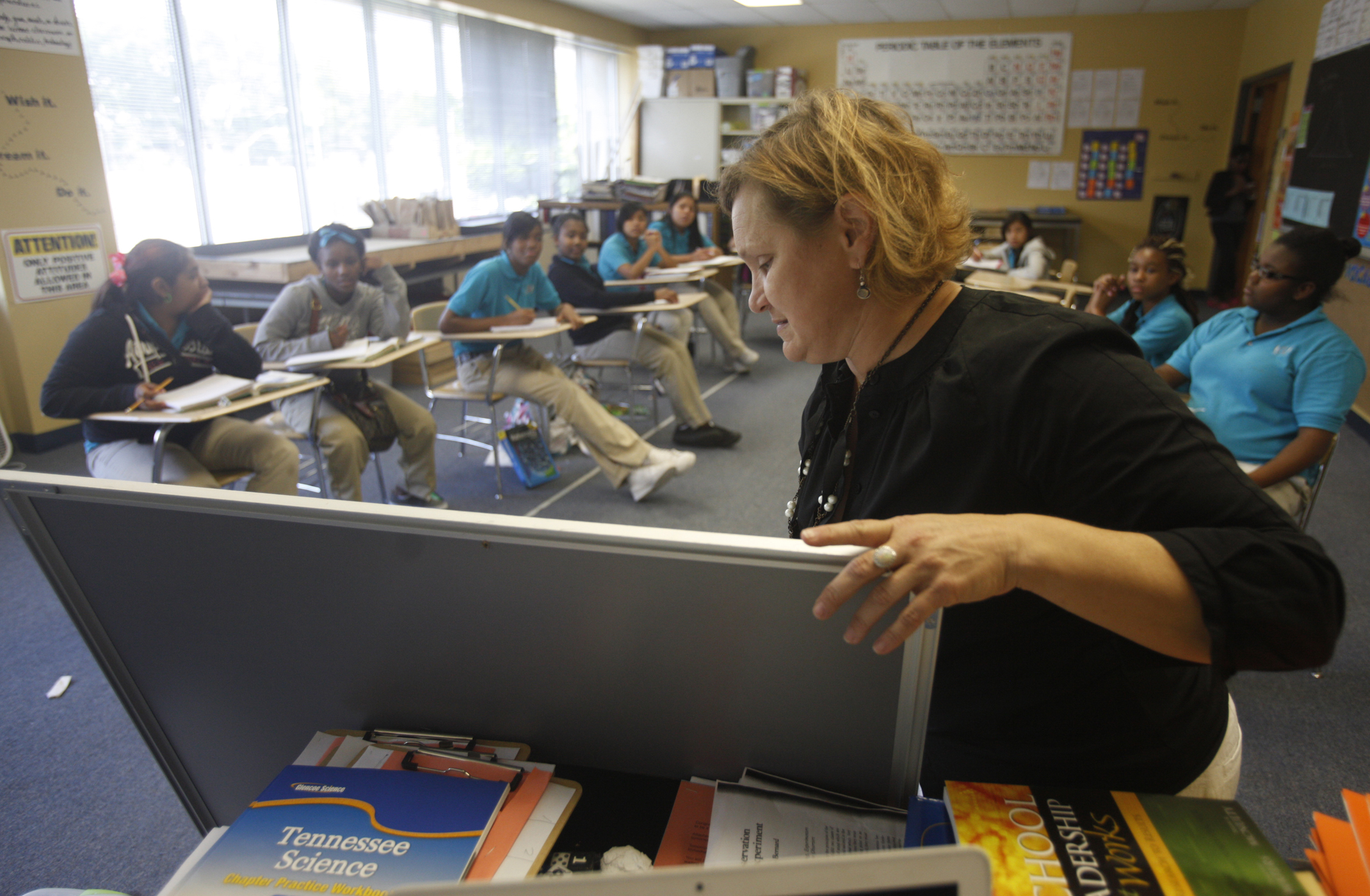Elaine Swafford knew the challenges she faced when she took over the Chattanooga Girls Leadership Academy, a charter school identified as one of the worst-performing schools in the state.
A $100,000 boost from a multinational corporation could help her turn around the all-girls school.
The school received a grant from AT&T Aspire, the company's multimillion-dollar campaign aimed at decreasing high school dropout rates and improving college readiness.
"This contribution will allow us to improve academically and, most importantly, prepare our girls for high school graduation," said Swafford, a veteran educator who was principal at The Howard School.
CGLA, whose curriculum focuses on science, technology, engineering and math (STEM), will use the money to strengthen existing programs and strategies as well as help pay for new training and materials.
The combination middle and high school, which opened in 2009, was set up to boost the number of women and minorities in the workplace, especially in science-related fields. School leaders are confident the grant will help that effort.
Beth Shiroishi, president of the AT&T Foundation, said the company is invested in improving education overall and creating a talent pipeline for future employees. The foundation already has given $100 million through its Aspire campaign nationwide and committed another $250 million over the next five years.
The Aspire campaign pays for programs, schools and nonprofits that serve students most at risk of dropping out of high school, Shiroishi said.
The company required grant applicants to show research and results that back up the practices in place, Shiroishi said. The foundation was impressed with the school's leadership, its STEM focus and a summer enrichment camp, among other attributes, she said.
"They certainly are doing phenomenal work to target the right kids who are otherwise at risk of dropping out of high school," she said.
CGLA is the only school in Tennessee to get an Aspire grant in the most recent round of awards, AT&T officials said.
A "defining year"
After taking over the school this summer, Swafford had a simple message for teachers and staff during their first meeting before classes started: "This must be a defining year for the Chattanooga Girls Leadership Academy."
After several years of low performance, the state labeled CGLA as a priority school, which means students performed in the bottom 5 percent on state tests. In Hamilton County, six schools made the list of 83 Tennessee priority schools.
Most CGLA students live in poverty; most are minorities. Of about 200 students, about 70 percent are black, 27 percent Hispanic and 1 percent white.
Even with those challenges, Swafford said the school is focused on attaining "immediate improvement."
To do that, it's more closely tracking the progress of individual students, completing routine assessments and recruiting volunteers to come into the building to tutor, she said.
Teachers and administrators have set high expectations for all students, which she said is crucial when working with such underserved populations.
"You have to believe that all students can learn at high levels," she said.
Inside the school Tuesday afternoon, the hallways were quiet except for the chatter of teachers in their rooms. There's a rule that teachers must teach with the classroom doors open.
Classes are relatively small, with about 15 girls each -- all dressed in khaki pants and teal sports shirts emblazoned with the CGLA logo.
Outsiders who visit any classroom are promptly welcomed by a student "ambassador" who welcomes and shakes the hands of visitors.
An ambassador in a sixth-grade math class explained how they're working on percentages, while a girl in the classroom next door explained the day's science lesson on food chains.
The ambassador exercise -- already well ingrained a month into the school year -- has little to do with core subjects, but it's part of the school's overall efforts of preparing girls for college, adulthood and the workforce, Swafford said.
"It's so much more than just academics," she said.
Contact staff writer Kevin Hardy at khardy@timesfreepress.com or 423-757-6249.
